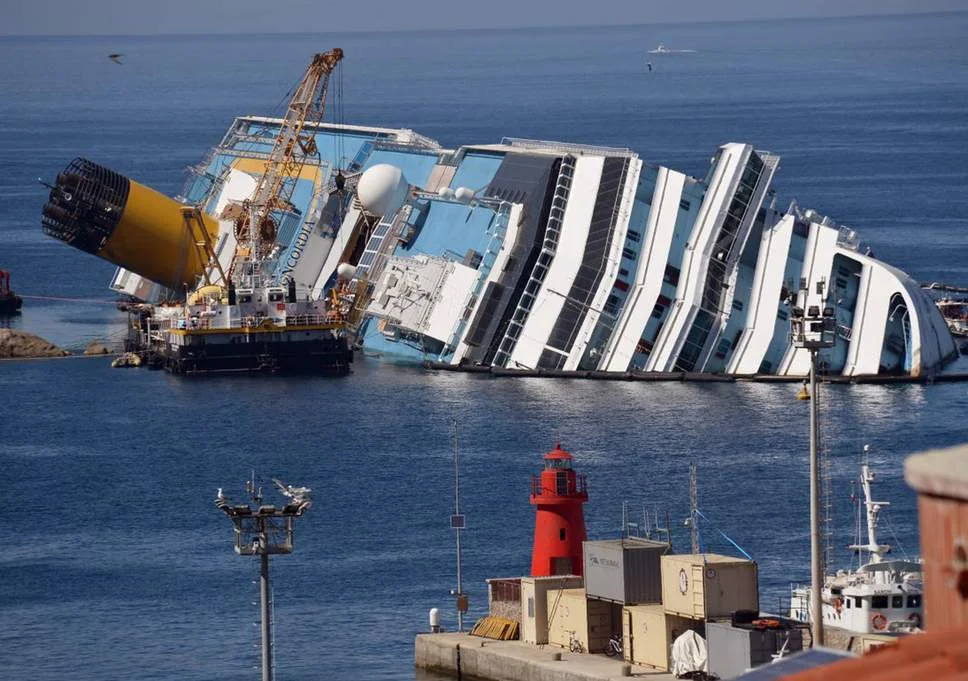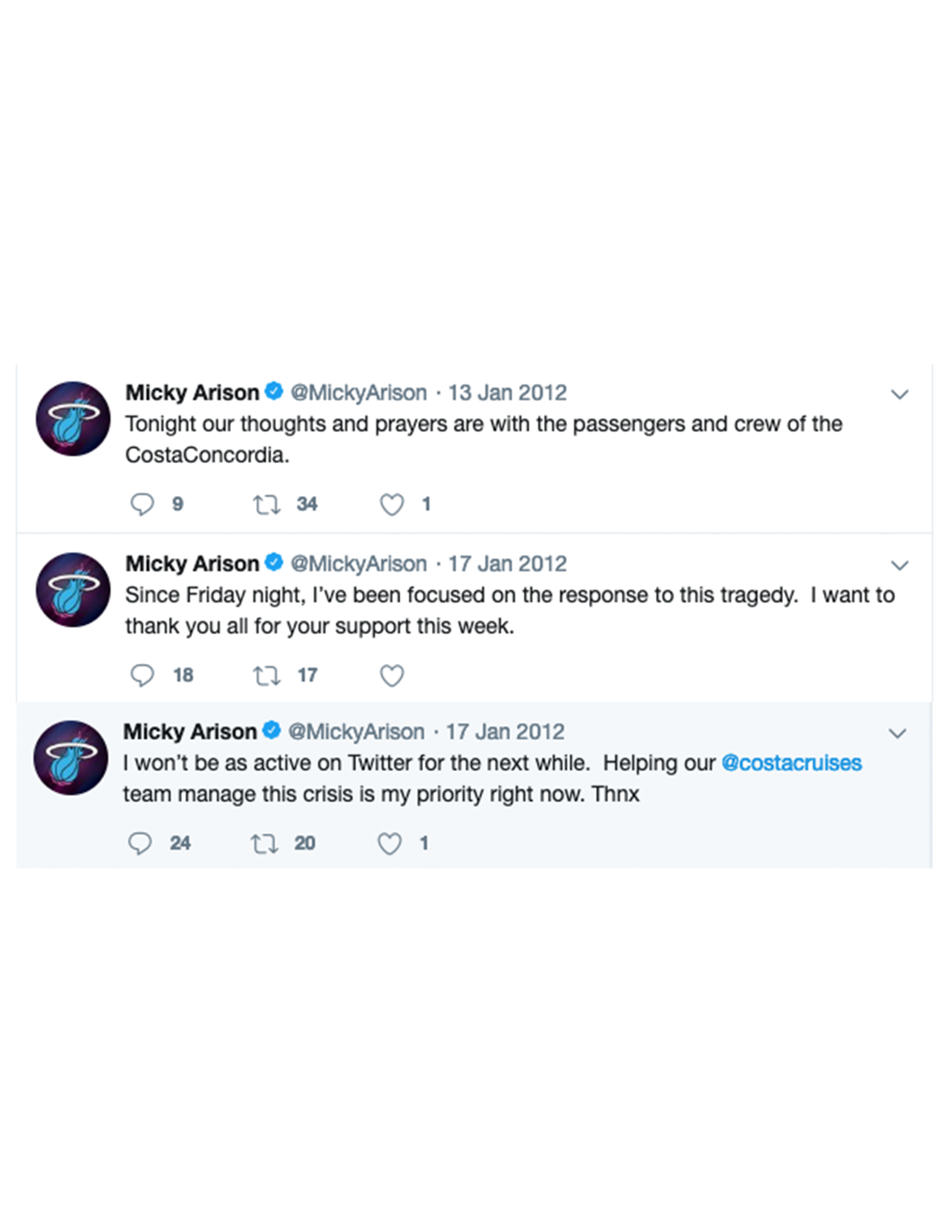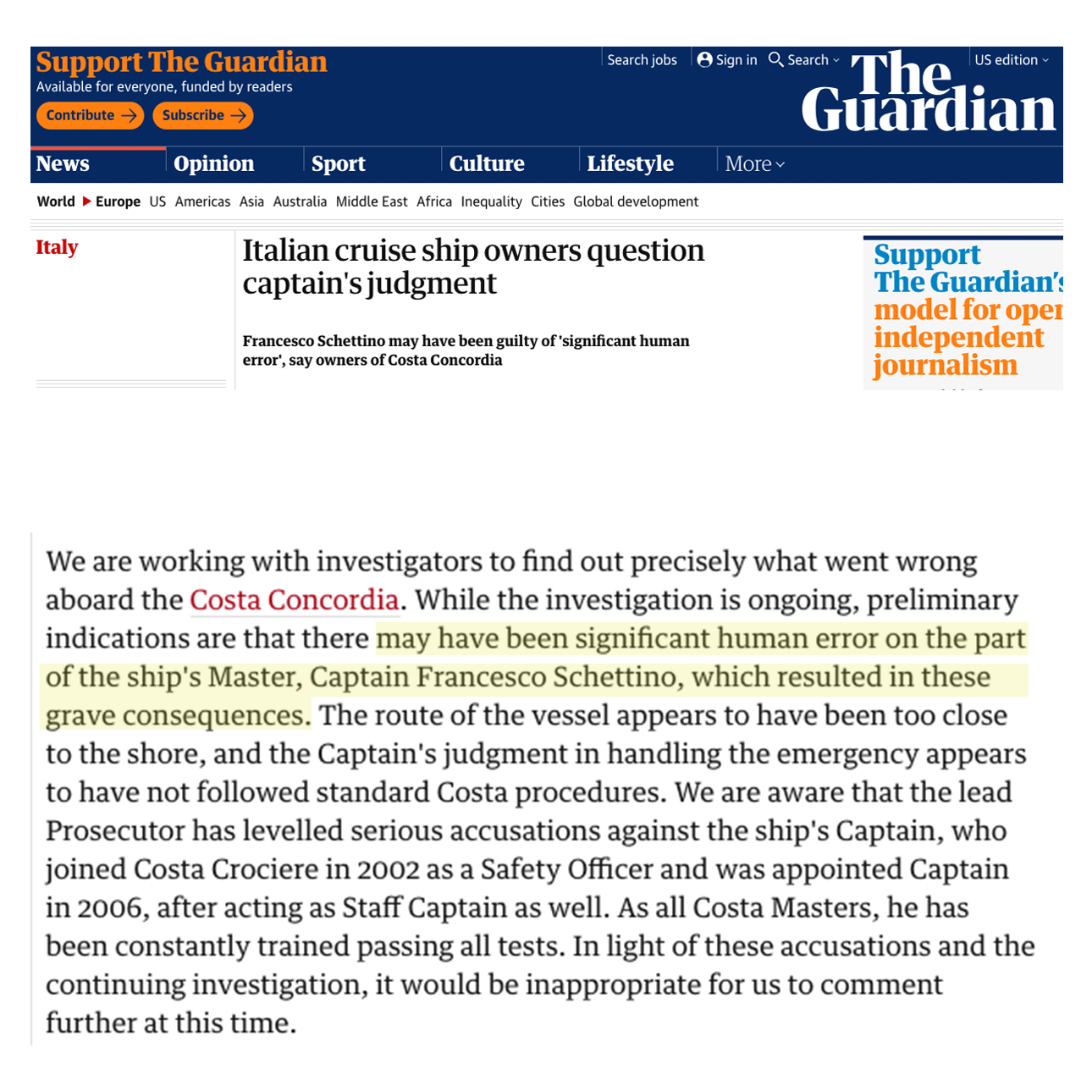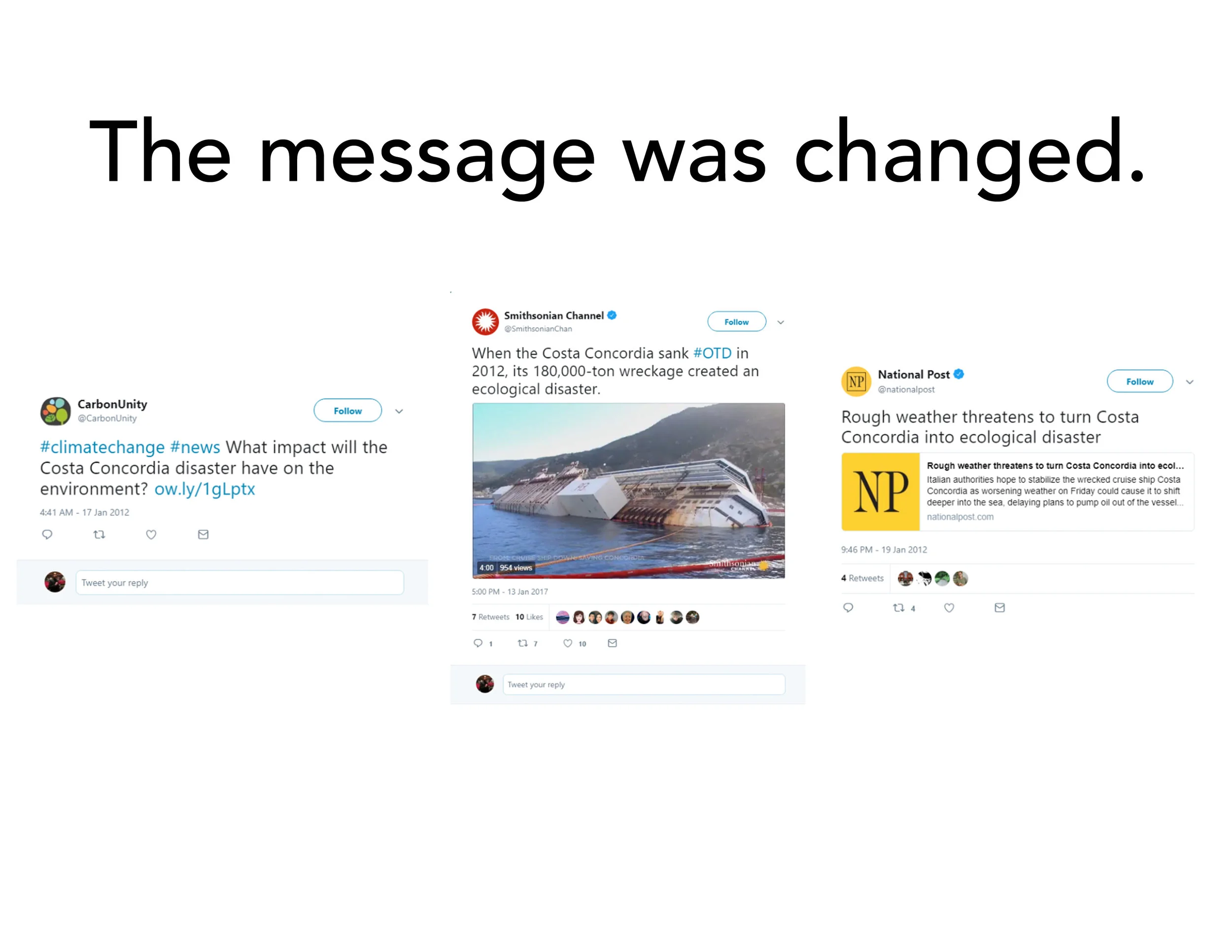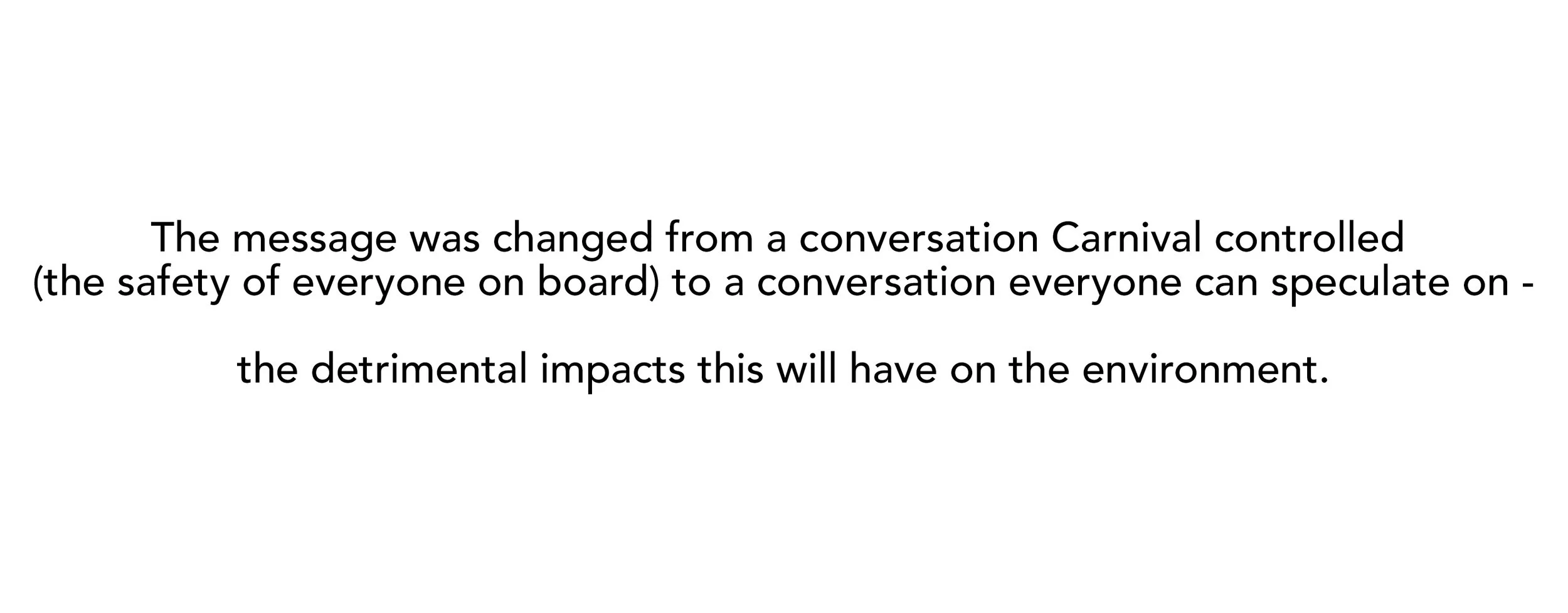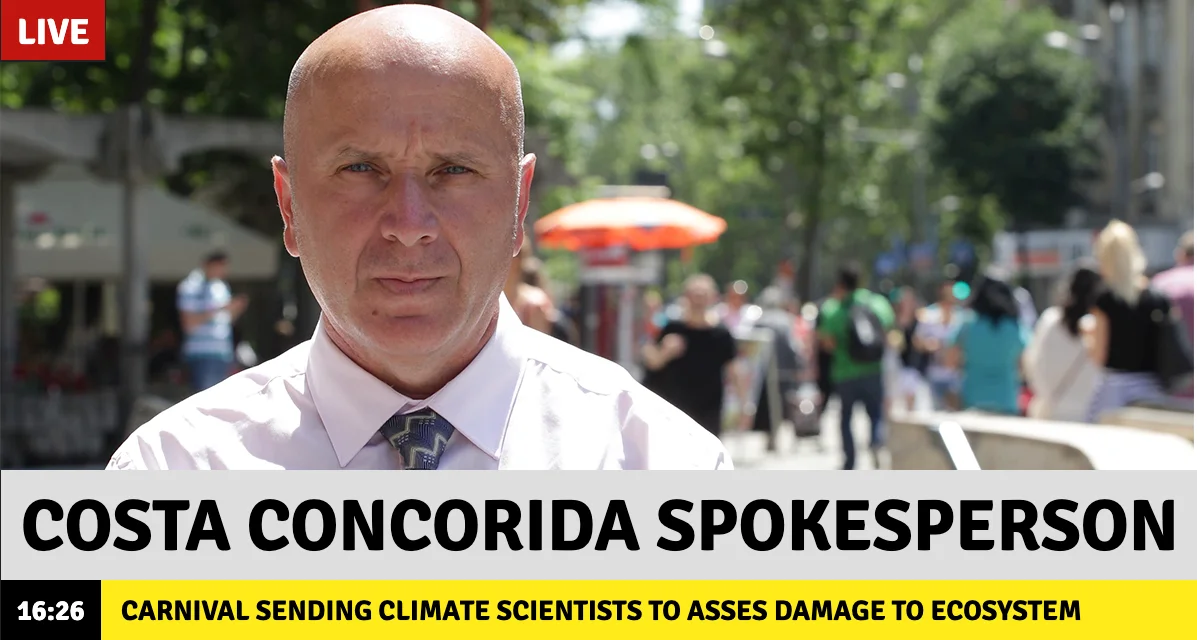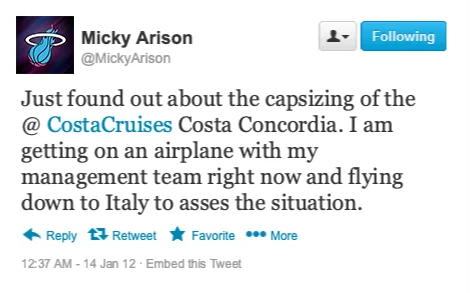The Costa Concordia Disaster
A PR Case Study.
Company Facts:
- Founded in 1854
- 13 Ships (advertised)
- 3.8 Billion (US) in revenue (2011)
- Headquarters: Genoa, Italy
- Acquired by Carnival in 2000
Carnival Mission Statement:
Together, we deliver joyful vacation experiences and breakthrough shareholder returns by exceeding guest expectations and leveraging our industry-leading scale.
What Happened?
On Friday, January 13th, 2012 at 9:44 PM the ship collided with rocks outside of the Italian island of Giglio during a routine maneuver, known as a “sail-by salute” - causing a 150’ gash below the waterline
1. No Leadership Presence
Carnival CEO Micky Arison sent a total of three Tweets during this week, offering no concrete information & himself calling it a “crisis.”
2. No Media Spokesperson
There was no spokesperson in the media to champion the brand & there was no distinct and recognizable personality to guide the conversation.
3. Carnival Released Vague Statements - Taking No Responsibility
Carnival is making this sound like a natural disaster.
4. Costa Shifts Blame To Captain
“There May have been significant human error on the part of […] Captain Francesco Schettino, which resulted in these grave consequences.”
You could look at it.
There was no ecological disaster.
- The ship is gone (this is a recent image of the island)
-There was no spillage of oil, human waste, or other hazardous materials
-There are no devastating effects to the ecosystem or environment
Costa did not harm the environment…
Brand value and public perception can be irreversibly harmed simply by people tweeting and writing articles that accuse a brand of wrongdoing, regardless of actually having done it.
Through the use of social media, the internet, and traditional media, the Costa Concordia narrative turned into a story about climate change, ecological impact, and how detrimental the company is to the environment.
Costa did not have a system in place to combat these claims.
Step One: Establish Credibility
Employ climate scientists from top universities in order to get ahead of the environmental claims
Step Two: Permeate The Media
Deploy spokespeople to various news outlets, communicating info about passenger safety and environmental concerns
Step Three: Create A Leadership Team Presence
Leadership team send out tweets periodically throughout the week, showing they have a handle and & understanding of what’s going on
A Look Back At Carnival’s Mission Statement:
Together, we deliver joyful vacation experiences and breakthrough shareholder returns by exceeding guest expectations and leveraging our industry-leading scale.
Integrated CSR Campaign
- Launch one year after costa sinking
- Set aggressive sustainability goals (zero waste cruise ships, banning of single use plastics, green energy propulsion systems)
- Dedicate children’s programming to learning about ecology/marine wildlife - including an entire section of the kids area devoted to the ecosystem
- Host nature documentary movie nights on board the ship
- Partner with vegan & flexitarian chefs and nutritionists to create earth-friendly dining options for cruisers
Nature Documentaries
On board every cruise we will screen nature documentaries to educate our consumer base on the environment.
Measurements for success:
-Engagement on credibility posts
-Engagement on leadership team posts
-Amount of families who are receptive to increased children's programming
-Amount of customers who react positively to vegan & flexitarian options
-Year-over-year success on sustainability goals




